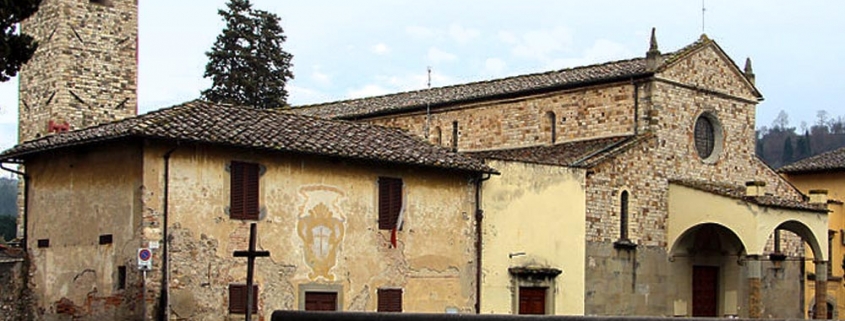Pieve di San Pietro a Ripoli
The Parish of Ripoli included the land between the Antella and Villamagna parishes, and the land that extended through the Pian di Ripoli all the way to the Arno and the Settignano area.
Constructed in 967 AD, despite being one of the most important churches in the Ripoli area – counting 16 subordinate churches – as early as the middle of the 13th century the Pieve San Pietro a Ripoli was already in a poor financial state. It was only in the 14th century, when the Lupicini family became patrons of the Church, that restoration and embellishment works were undertaken, to be continued over the following years.
The San Pietro Church is situated at the center of the Ripoli and is fundamentally a three-nave basilica with a semi-circular apse, further enhanced with a beautiful cloister.
Although they can now be admired within the Church, statues of St. Peter and St. Paul surmounted the original portico.
The current portal dates to the Renaissance, having substituted the original Romanesque portal with stone architrave, whose only surviving fragment is now kept in the rectory. The architrave was decorated with bas-relief carvings in clusters and racemes, and on the surviving fragment the following inscription can be read: IRE MEI DS MISERERE MEI / PERTUM OTN.
On the upper portion of the façade two single lancet windows and a single ocular window can be admired, all added during the 20th century restoration. The prospectus of the façade is completed with a tympanum with a convex frame and Gothic pinnacles.
The internal architecture of the Church appears severe and quite bare, and in fact the only decorative elements are the central arch and archway of the lancet window over the apse, created using alternating serpentine and clear stones.
The fresco of Christ as the suffering redeemer framed by the symbols of the Passion, by Pietro Nelli, should be mentioned however. He is also the painter of a fragment depicting the Annunciation, located in the left hand nave, and the Processional Cross. An elegant marble shrine from the end of the 15th century and various 17th century paintings, amongst which the Beheading of St. John the Baptist by Orazio Fidani is particularly notable, complete the decorations.
This post is also available in: Italian



